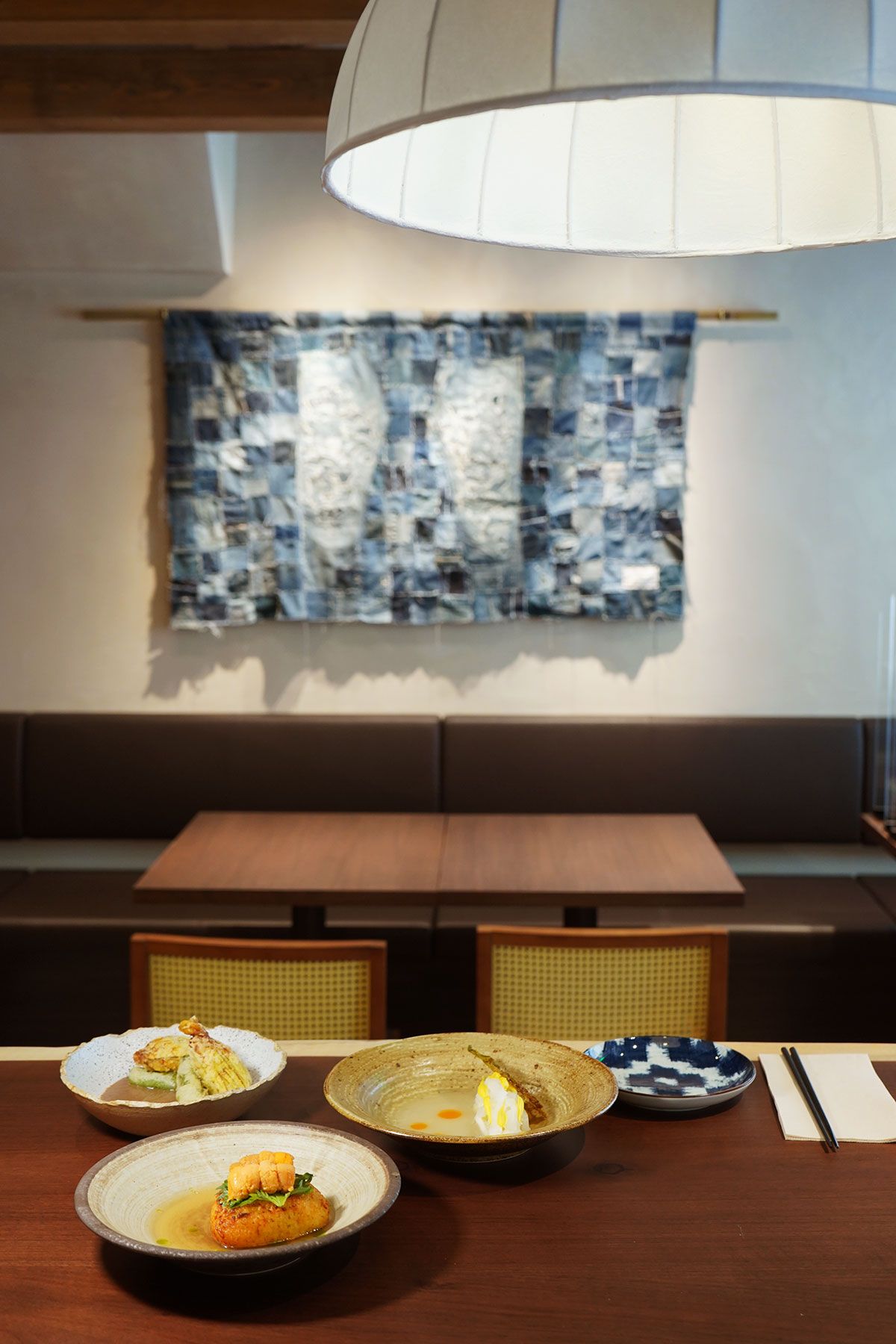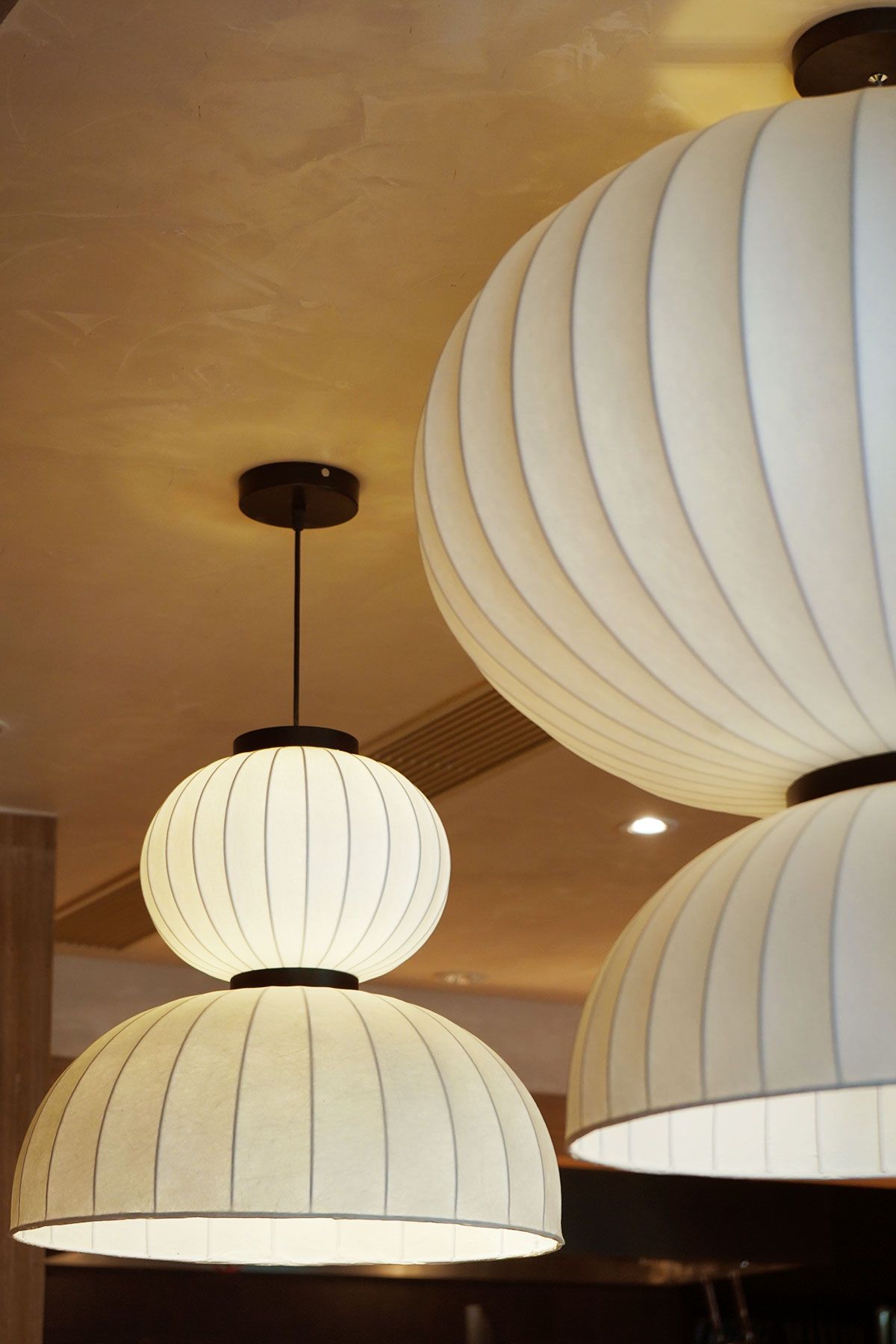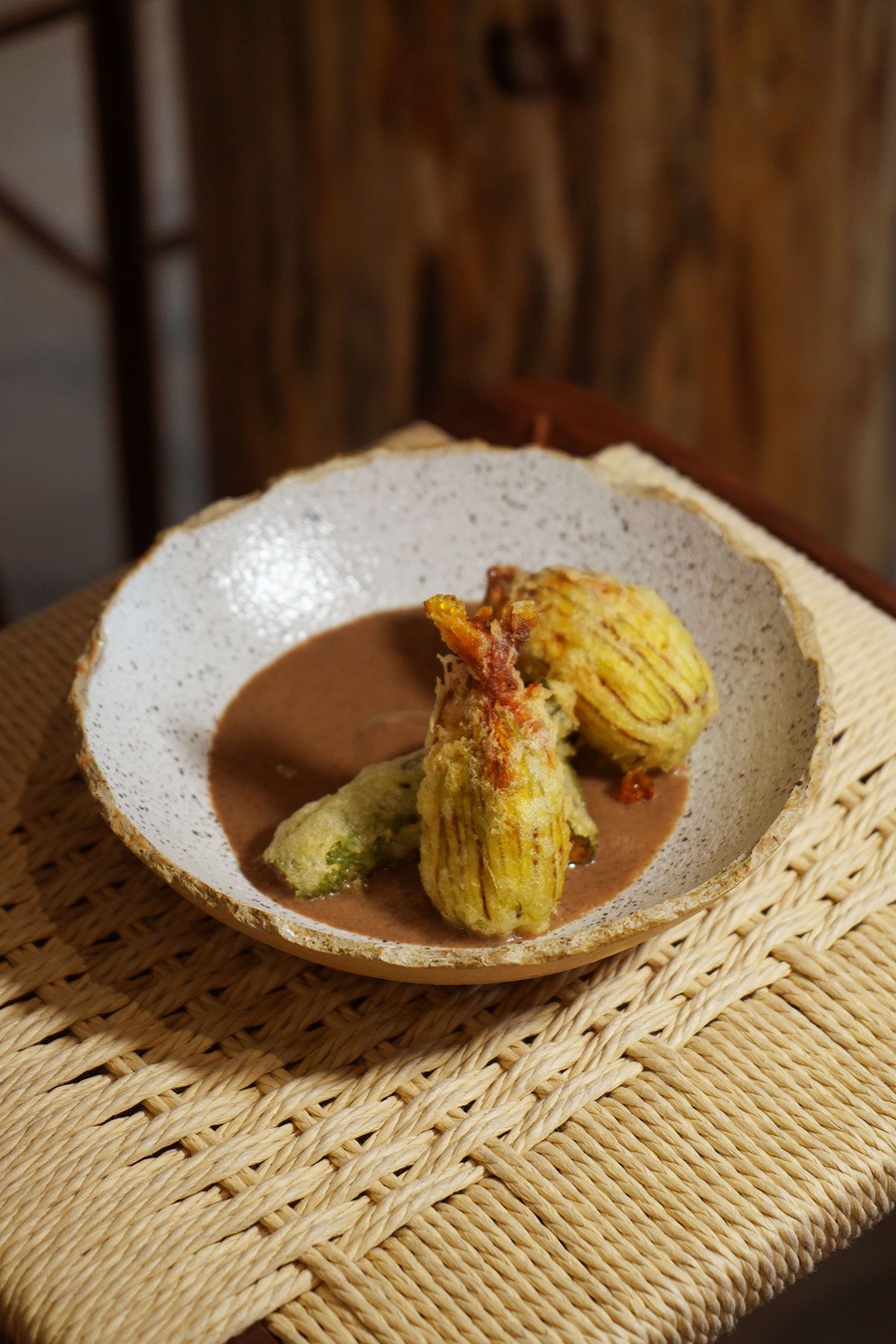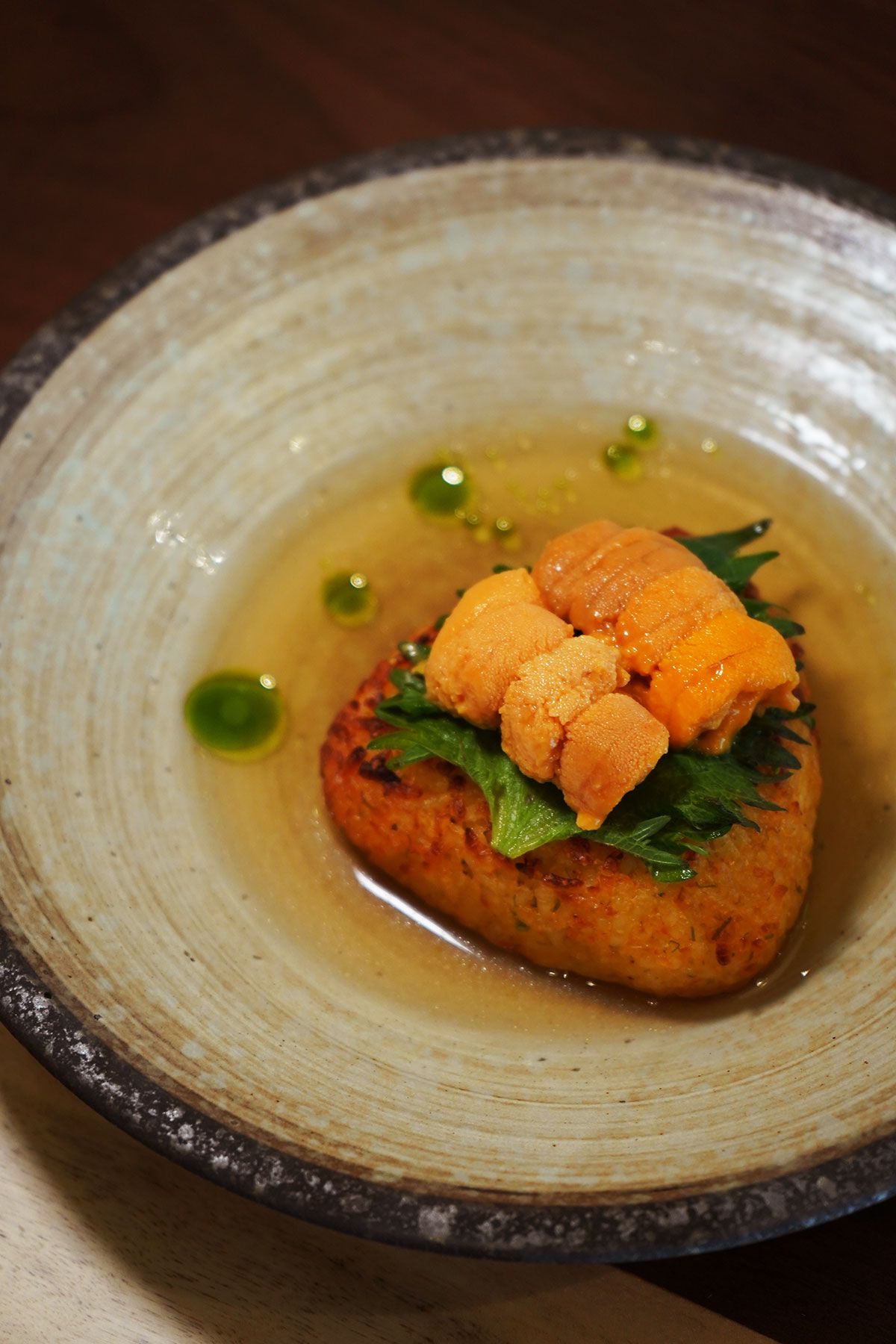Shun Sato's new Sheung Wan restaurant recreates a slice of his upbringing in Japan, yet his cooking is more quietly confident than ever
Shun Sato has grown up. Having left his post as head chef at stylish late-night izakaya Fukuro last year, the Sendai native resurfaced in May to host a pop-up with Kyoto gin label Ki No Bi at Sake Central under the banner of his new contemporary Japanese restaurant, Censu. With the imminent opening of his own project, Sato is keen to show the city that he's in a more authentic place.
If Sato's last stint at Fukuro catered to Soho's imagined Japanese salarymen, then Censu (the word for 'folding fan' in Japanese) is the village ryokan (guesthouse) that these same office workers have decamped to in the countryside following their retirement from the corporate Tokyo life. Found halfway down Sheung Wan's Gough Street, Censu's facade—a sakan-plastered, half-timbered affair inspired by his grandmother's home in Sendai—has seemingly been transplanted directly from the Japanese countryside, so subtly jarring is its effect.
See also: Kosei Kamatani On Why Mong Kok Street Food Would Be His Last Meal
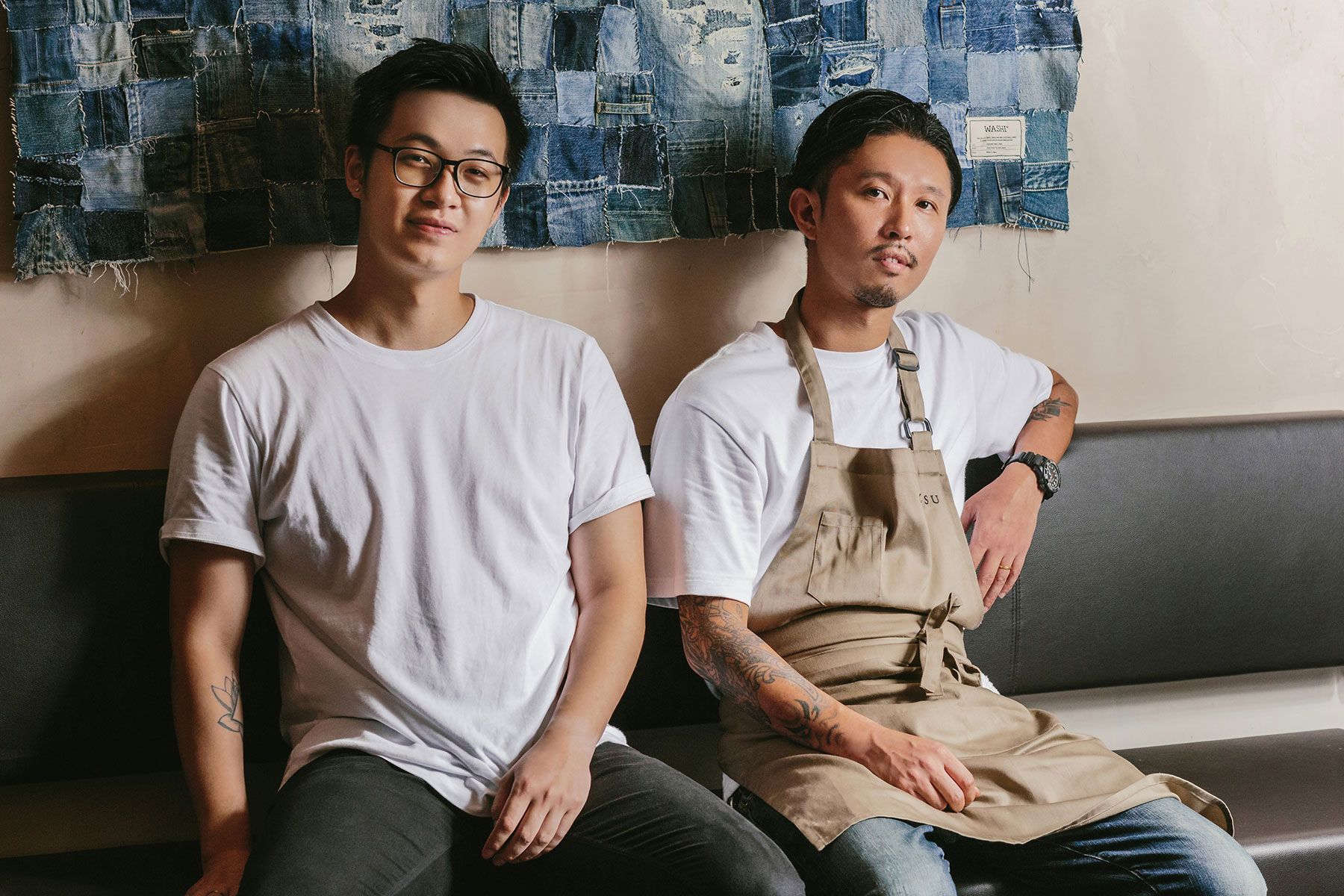
Stepping through the noren curtain at the entrance, the wabi-sabi effect continues indoors. Designed by Jamo Associates (who were also responsible for the design of Tokyo's Trunk Hotel), the 40-seat interior—about the same size as Fukuro—is spartan but tastefully so. The walls, painted a rustic beige, are rounded at the corners (a minute but important detail that Sato says is commonplace in Japan but absent in Hong Kong); an open kitchen allows the flurry of activity to bleed into the dining space; and hip-hop plays at a background volume over the speakers. On the far wall, a tapestry made using discarded scraps of denim clues diners into Sato's sartorial sensibilities, who himself is a devotee of Yeezy sneakers, Visvim kimonos, and silver jewellery by the legendary Goro Takahashi.
Censu, explains general manager Keaton Lai, is the embodiment of the five senses. "It's a part of the wabi-sabi culture: we want things to age, we want things to get torn, this is how things are going to be. Things aren't gonna be polished forever." The centrepiece walnut table and the walls are supposed to get banged up, he continues. Guests are encouraged to wear raw denim to the restaurant so that the indigo taints the fabric of the seats.
"This is a more natural thing," Sato adds. "Tomorrow, it will be even more beautiful."
Related: At Newly Opened Masa Hong Kong, Dry-Aged Sushi Is The Star Turn

